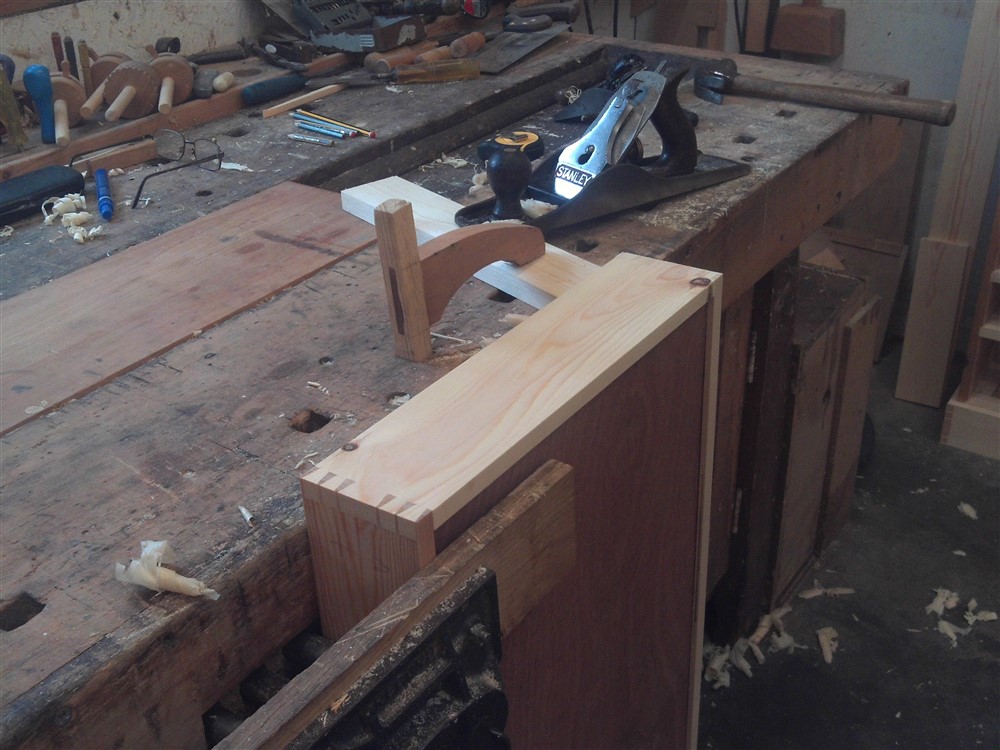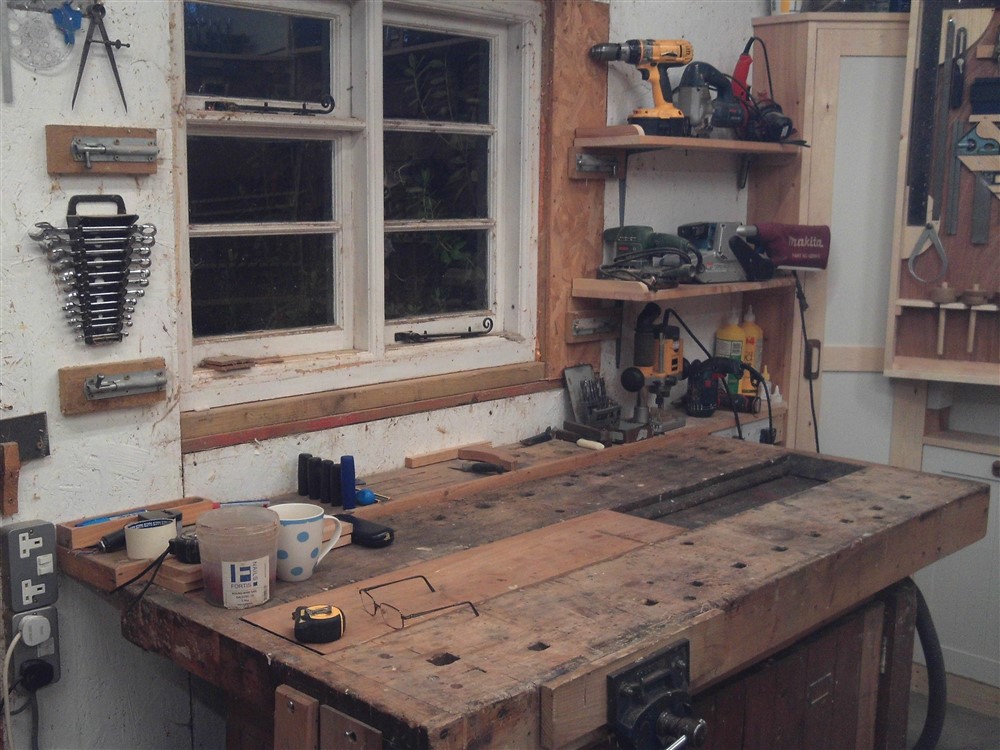Steve Maskery
Established Member
Ok, I know I'm likely to be opening a can of worms that will make any sharpening thread seem as benign as "How do you do?", but here goes.
I made what I thought was my lifetime bench about 20-odd years ago. It has served me well.
But.
I bought a load of beech from Harry Adcock's. The place is a housing estate, now, I believe.
There was something a bit odd while I was there. I was being served by a very charming yard-hand, but something was not right. I didn't know what, and I have always been a bit too naïve for my own good. I bought the wood, I built my bench.
The first summer of my new bench's life, I came down to see my workshop alive with flying woodworm. They were everywhere. The bar steward who served me knew what he was selling, I am sure. It made sense of the nod and wink to his colleague.
I treated it so it didn't get any worse and I have no more recurrence. Until last year. I cam down one day to find several crawling over the surface. That was the end of that day's work, off to the store, buy some woodwork killer and splash it on like it was Brut. I don't want another episode this year.
As well as that, I was nearly 2" taller then than I am now. I'm shrinking, just not in the right direction. My bench now seems uncomfortably high at 900mm.
So for both those reasons, it's time for a new one.
In an ideal world, I would make it out of maple, with a Benchcrafted wagon vice and Croix de St Pierre leg vice, finished with the oil of pressed Himalayan Violets. But the days of generous disposable income are well and truly over, so I want to make as good a bench a I can out of pine (either Vths or possibly southern yellow pine, I'll have to see what the price difference is) and re-use my existing 52½ and my tail vice.
But my dilemma is, should I have a tool well or not?
Answers on a postcard, please
I made what I thought was my lifetime bench about 20-odd years ago. It has served me well.
But.
I bought a load of beech from Harry Adcock's. The place is a housing estate, now, I believe.
There was something a bit odd while I was there. I was being served by a very charming yard-hand, but something was not right. I didn't know what, and I have always been a bit too naïve for my own good. I bought the wood, I built my bench.
The first summer of my new bench's life, I came down to see my workshop alive with flying woodworm. They were everywhere. The bar steward who served me knew what he was selling, I am sure. It made sense of the nod and wink to his colleague.
I treated it so it didn't get any worse and I have no more recurrence. Until last year. I cam down one day to find several crawling over the surface. That was the end of that day's work, off to the store, buy some woodwork killer and splash it on like it was Brut. I don't want another episode this year.
As well as that, I was nearly 2" taller then than I am now. I'm shrinking, just not in the right direction. My bench now seems uncomfortably high at 900mm.
So for both those reasons, it's time for a new one.
In an ideal world, I would make it out of maple, with a Benchcrafted wagon vice and Croix de St Pierre leg vice, finished with the oil of pressed Himalayan Violets. But the days of generous disposable income are well and truly over, so I want to make as good a bench a I can out of pine (either Vths or possibly southern yellow pine, I'll have to see what the price difference is) and re-use my existing 52½ and my tail vice.
But my dilemma is, should I have a tool well or not?
Answers on a postcard, please


































